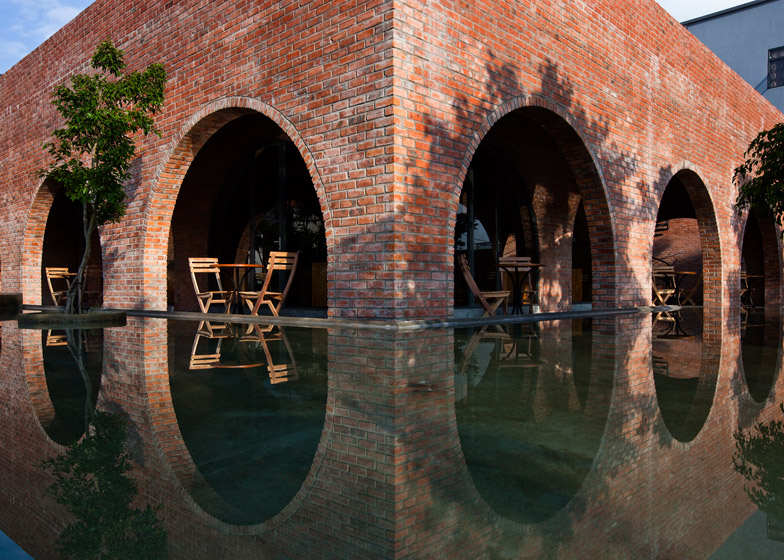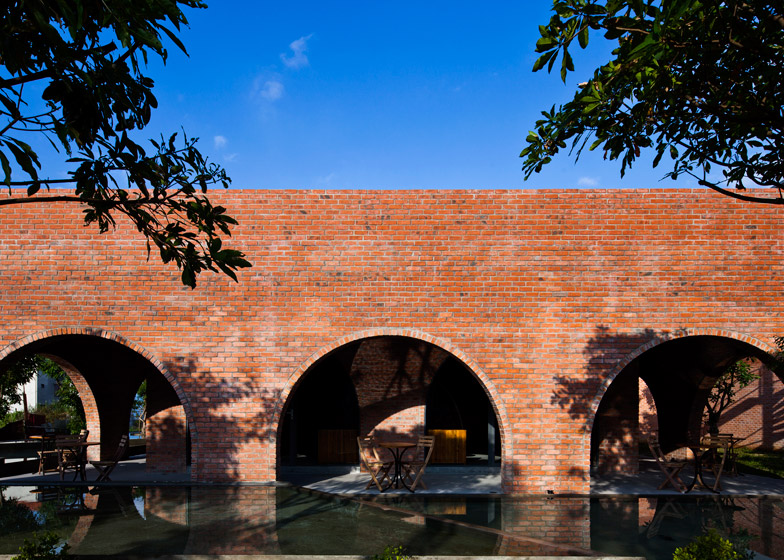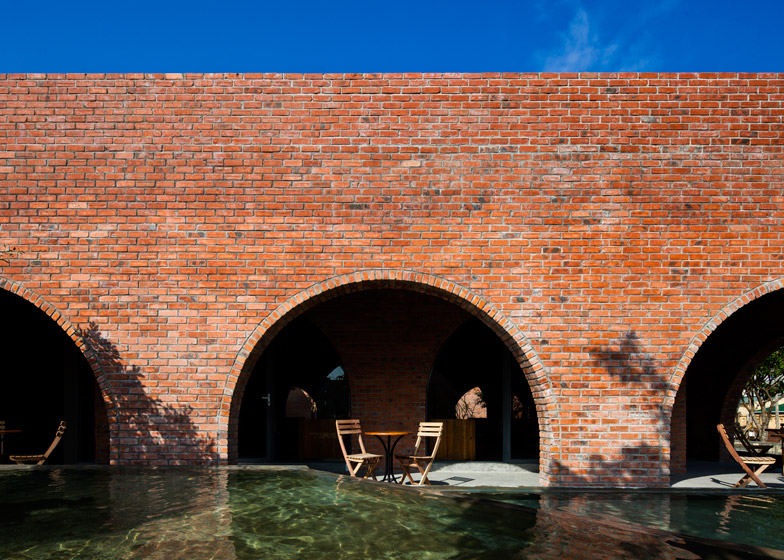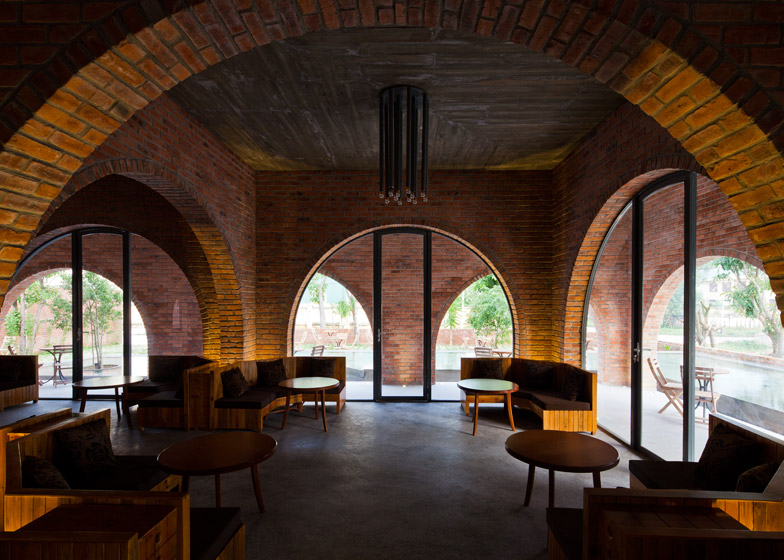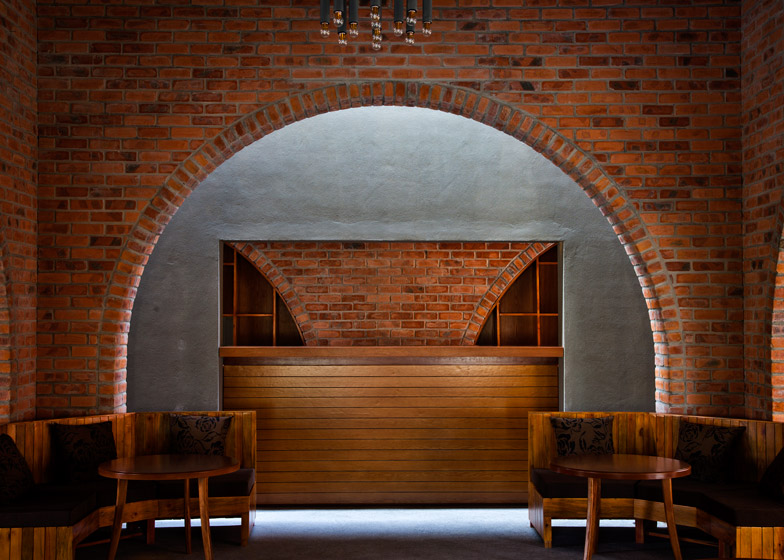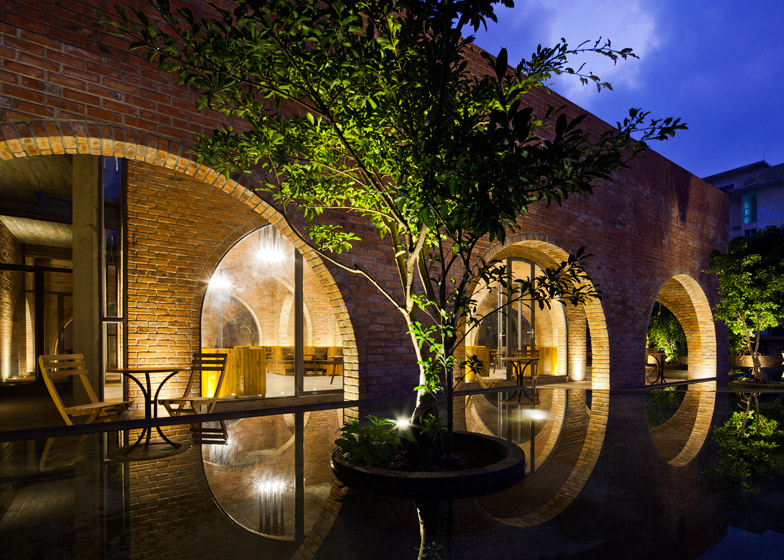A grid of 24 red brick arches frames the interior of this Vietnam coffee shop by Wangstudio, which sits between a garden and a reflective pool of water (+ slideshow).
Named F Coffee, the small brick cafe occupies a site near the airport in Dong Hoi, a city in Quang Binh Province.
Principal architect Le Vu Quang wanted to create as simple a structure as possible, so came up with a design for a quadrangle building made up of brick walls and arched openings.
"We usually start with the most basic and easy-to-understand ideas," Le Vu Quang told Dezeen. "F Coffee was designed around the concept of minimalism – brick, concrete, stone, trees and water – to create a concise and emotional space."
The grid of walls divides the building up into two layers. The outer layer takes the form of a sheltered terrace, where chairs and tables are positioned between the arches, while the inner layer houses the shaded cafe.
Machine-made red bricks were sourced from a local manufacturer for the walls. These were built up with little flourish, apart from a curving soldier course that follows the outline of each arch.
According to Le, this structure provided a cost-effective solution that references some of Vietnam's historic architecture.
"Arches help the space to reflect the gates of old castles or villages of Vietnam, providing stable and attractive perspectives," he said. "Moreover, using arches also reduced many of the costs and difficulties of the construction process."
The arches that separate the the terrace from the cafe are infilled with glazing. Each one includes a door, allowing the owners to cross-ventilate the interior on hot and humid days.
The reflective pool runs along the south and eastern edges of the building. "We added the pool of water to cool down the cafe spaces," said the architect.
Curved seats inside the cafe echo the arcs of the surrounding walls and have been positioned in the corners of the prescribed grid. This forms natural walkways through the centre of each arch.
Clusters of small light bulbs create chandelier-type lighting inside the cafe, while spotlights were integrated around the exterior to "maximise the beauty of the structural arches in the evening".

